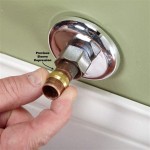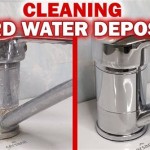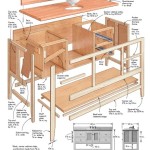Kohler Bathroom Faucet Valve Replacement: A Comprehensive Guide
A leaking or malfunctioning bathroom faucet can be a significant source of frustration and wasted water. Often, the culprit behind these issues is a worn or damaged valve. Kohler faucets, known for their quality and design, are generally durable, but even they require maintenance and occasional part replacement. Replacing a Kohler bathroom faucet valve is a task that many homeowners can undertake themselves, saving on plumbing costs. This article provides a comprehensive guide to understanding the process, including identifying the valve type, gathering necessary tools, and executing the replacement safely and effectively.
Understanding Kohler Faucet Valve Types
Before embarking on the replacement process, it's crucial to identify the specific type of valve used in the Kohler faucet. Kohler employs various valve designs, each with its own characteristics and replacement procedures. Common types include compression valves, cartridge valves, ball valves, and ceramic disc valves. Misidentifying the valve type can lead to purchasing the wrong replacement part and complicating the repair. The faucet's model number, usually found on the original packaging or the Kohler website, is instrumental in determining the correct valve type.
Compression Valves: These are one of the oldest and simplest faucet valve designs. They typically consist of a rubber or neoprene washer attached to the end of a stem. When the faucet handle is turned, the stem pushes the washer against the valve seat, shutting off the water flow. Compression valves are easily identifiable by their separate hot and cold handles, requiring multiple turns to fully open or close the water supply. Replacing the washer is often sufficient for minor leaks in compression valves, but the entire valve assembly may need replacement if the valve body is corroded or damaged.
Cartridge Valves: Cartridge valves are more modern and streamlined than compression valves. They utilize a cylindrical cartridge, usually made of plastic or brass, containing all the working parts of the valve. These valves are typically found in single-handle faucets, where the lever controls both water flow and temperature. Cartridge valves are known for their smooth operation and ease of repair. Replacement involves removing the handle, retaining clip, and the old cartridge before inserting the new one. Determining the correct cartridge is critical, as different Kohler faucet models use different cartridge designs. Some cartridges require special tools for removal and installation.
Ball Valves: Ball valves, another type often used in single-handle faucets, feature a slotted ball that controls the mixing of hot and cold water. When the handle is moved, the ball rotates, aligning the slots with the water inlets and outlets to regulate the flow. Ball valves are known for their durability and resistance to leaks, but they can become problematic over time due to mineral buildup or wear on the ball and seals. Replacing a ball valve involves disassembling the faucet body, removing the old ball and seats, and installing the new components. Special tools may be required to remove and install the ball and seats properly.
Ceramic Disc Valves: Ceramic disc valves are considered the most advanced and reliable type of faucet valve. They utilize two ceramic discs, one fixed and one movable, to control the water flow. When the faucet is turned on or off, the movable disc slides over the fixed disc, aligning openings to allow water to pass. Ceramic disc valves are known for their drip-free performance and long lifespan. They are generally found in high-end faucets. Replacement of a ceramic disc valve typically involves disassembling the faucet body, removing the old discs and seals, and installing the new components. Accurate alignment of the ceramic discs is crucial for proper operation.
Preparing for the Replacement
Successful valve replacement hinges on proper preparation. This includes gathering the necessary tools and materials, as well as taking essential safety precautions.
Tools and Materials: A well-stocked toolbox is essential. The necessary tools may include: * Adjustable wrench: For loosening and tightening nuts and connections. * Screwdrivers (Phillips and flathead): For removing faucet handles and other components. * Pliers: For gripping and manipulating small parts. * Basin wrench: For reaching tight spaces under the sink. * Penetrating oil: To loosen corroded or stuck parts. * Towels or rags: To protect the sink surface and absorb water. * Replacement valve: The correct valve type and size are critical. * Plumber's grease: To lubricate O-rings and seals. * Optional: Valve seat wrench (for removing valve seats in compression faucets), cartridge puller (for removing stubborn cartridge valves).
Safety Precautions: Before starting any plumbing work, safety is paramount. The very first step is to shut off the water supply to the faucet. This is usually achieved by closing the shut-off valves located under the sink. If shut-off valves are not present, or if they are malfunctioning, the main water supply to the house must be turned off. After shutting off the water, open the faucet to relieve any residual pressure in the pipes. Placing a bucket under the faucet can prevent water damage when disconnecting the water lines. It is also advisable to wear safety glasses to protect the eyes from debris and to use gloves to protect the hands from rough surfaces and chemicals. When working with old plumbing, lead exposure is a potential concern, so thorough hand washing is crucial after completing the work.
Step-by-Step Valve Replacement Procedure
The valve replacement procedure varies depending on the type of valve. However, the general steps outlined below provide a framework for the process. Specific instructions may vary depending on the model of the Kohler faucet.
Step 1: Disassembly: Begin by carefully disassembling the faucet. This typically involves removing the handle(s) using a screwdriver. Depending on the faucet design, there may be decorative caps or screws that need to be removed first. Once the handle is removed, expose the valve stem or cartridge. For cartridge valves, a retaining clip or nut usually holds the cartridge in place.
Step 2: Removing the Old Valve: After exposing the valve, carefully remove it. For compression valves, loosen the packing nut and unscrew the valve stem. For cartridge valves, remove the retaining clip or nut and gently pull out the cartridge. A cartridge puller tool can be helpful if the cartridge is stuck. For ball valves, remove the handle, cap, and adjusting ring, then carefully lift out the ball and seats. For ceramic disc valves, disassemble the faucet body to access the ceramic discs.
Step 3: Cleaning and Inspection: Once the old valve is removed, thoroughly clean the valve seat and surrounding area. Use a scrub brush or abrasive pad to remove any mineral deposits or corrosion. Inspect the valve seat for damage. If the valve seat is damaged in a compression faucet, a valve seat wrench can be used to remove and replace it. Examine all other faucet components for wear or damage, and replace them as necessary.
Step 4: Installing the New Valve: Lubricate the new valve with plumber's grease before installation. For compression valves, screw the new valve stem into the faucet body and tighten the packing nut. For cartridge valves, align the new cartridge with the faucet body and gently push it into place. Secure it with the retaining clip or nut. For ball valves, insert the new seats and springs, then carefully place the ball into the faucet body. Secure the ball with the cap and adjusting ring. For ceramic disc valves, carefully align the new ceramic discs and reassemble the faucet body.
Step 5: Reassembly and Testing: After installing the new valve, reassemble the faucet in the reverse order of disassembly. Ensure all parts are properly aligned and tightened. Once the faucet is reassembled, slowly turn on the water supply and check for leaks. If leaks are present, tighten the connections or re-examine the valve installation. Allow the water to run for a few minutes to flush out any debris. Test the faucet's operation by turning the handle on and off and adjusting the temperature.
Addressing Specific Valve Issues: Each valve type presents its own unique challenges. Compression valves often suffer from worn washers, which can be replaced individually without replacing the entire valve. Cartridge valves may become stiff or difficult to turn, indicating a need for replacement. Ball valves can leak due to worn seats and springs, requiring a rebuild kit. Ceramic disc valves are generally reliable but may leak if the ceramic discs are damaged. Understanding these common issues can aid in diagnosing and resolving faucet problems effectively.
Replacing a Kohler bathroom faucet valve is a manageable task with the right knowledge, tools, and preparation. Careful identification of the valve type, adherence to safety precautions, and a thorough understanding of the replacement procedure are key to a successful outcome. By following these guidelines, homeowners can save on plumbing costs and ensure the continued performance of their Kohler faucets.

Kohler Gp77005 Ceramic Cartridge

Kohler Metal Faucet Repair Kit Most Two Handle Faucets From 1990 To 2010 In The Kits Components Department At Com

Kohler Metal Faucet Repair Kit Most Valves From 1990 2010 In The Kits Components Department At Com

Factory Direct Plumbing Supply Kohler Valvet Kit 2 Valve Br Fits Triton Ii Alterna P021 212

Rebuild Kit For Kohler 2 Handle Tub Or Shower Valves Dea Bathroom Machineries

Maintenance Replacement Parts Kohler

Kohler Multiple Materials Tub Shower Cartridge Repair Kit In The Faucet Kits Components Department At Com

Kohler Gp1093674 Single Control Faucet Valve Faucetdepot Com

Kohler Valve Assembly 30430 Noel Splumbing Supply

Everbilt Hot Cold Cartridge For Kohler 96305 The Home Depot
Related Posts







